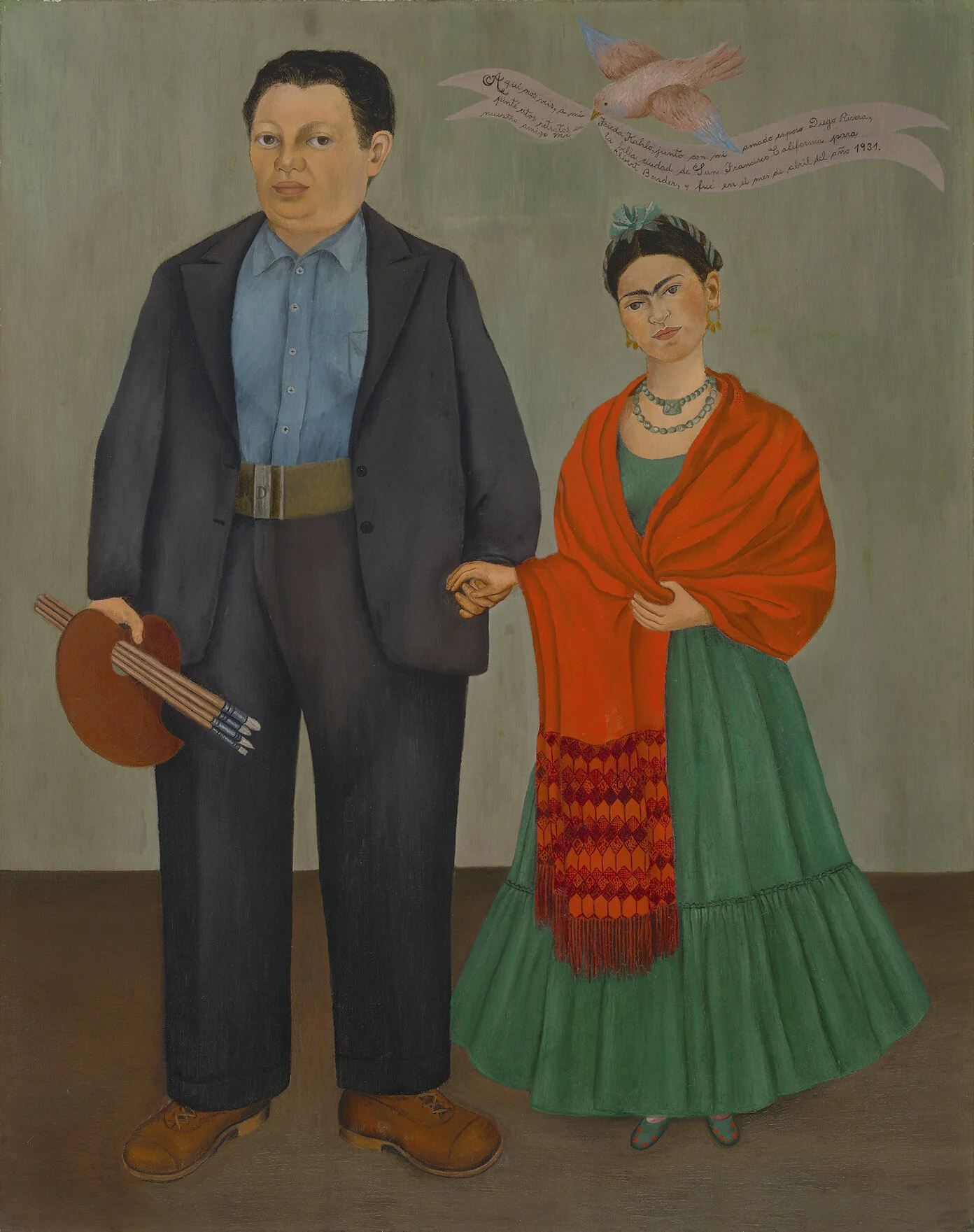Book Review: Frida Kahlo and San Francisco
Frida Kahlo, Frieda and Diego Rivera, 1931. Collection SFMOMA. Albert M. Bender Collection, gift of Albert M. Bender. © Banco de Mexico Diego Rivera & Frida Kahlo Museums Trust, Mexico, D.F. / Artists Rights Society (ARS), New York
San Francisco is likely not the first place you’d think of when imagining Frida Kahlo’s legacy. Instead, what often comes to mind are Mexico City, Coyoacán, her enchanting La Casa Azul. However, perhaps few know that Kahlo was once dubbed the “Queen of Montgomery,” after the street she lived on during her time in San Francisco and that it was there where she honed her craft in painting and even completed some of her most famous works. Surprisingly, it was also in San Francisco where the artist truly began to fashion her Mexican indigenous identity through clothing, distinguishing herself from the locals and “dull gringas” she encountered in the city.
A new book, Frida Kahlo and San Francisco, published by Hirmer Publishers and distributed by the University of Chicago Press, brings to light the pivotal role that San Francisco played in the construction of the artist’s identity, embrace of her Mexican heritage and development as a skilled painter. With essays by Gannit Ankori and Circe Henestorsa, and contributions from Hilda Trujillo and Hillary C. Olcot, this brief, but beautifully illustrated 96-page catalogue skillfully traces the transformation that occurred in Kahlo’s identity as a result of her two trips there: first, in the fall of 1930 and second in 1940, as well as the time that elapsed between them.
As Hilda Trujillo, Director of Museos Frida Kahlo y Diego Rivera - Anahuacalli points out, when Kahlo first came to San Francisco in 1930, she arrived as “Madame Rivera,” a 23-year-old, newly-wed who accompanied her husband while he worked on a mural for the San Francisco Art Institute. By the time she returned in 1940 for a medical procedure related to the polio she contracted as a child, however, she arrived as the fully-embodied artist and independent Frida Kahlo we know and love today.
Traces of this transformation are supported through an examination of Kahlo’s material culture— including hundreds of personal artifacts from clothing, accessories, and personal letters, to medicines and orthopedic devices—all of which were part of a lost archive discovered in 2004 in her home at La Casa Azul.
Published to coincide with Frida Kahlo: Appearances Can Be Deceiving, a major exhibition currently on view at the de Young Museum in San Francisco which displays many of these long-hidden away, personal treasures, this catalogue reveals not only the important connection between dress and identity for Kahlo, but also explores San Francisco’s key role in solidifying how the artist fashioned her own image.
Diego Rivera and Frida Kahlo, San Francisco, California.© Peter A. Juley & Son Collection, Smithsonian American Art Museum
Frida Kahlo, San Francisco, California (at windowsill) © Peter A. Juley & Son Collection, Smithsonian American Art Museum
Featuring an impressive selection of archival photographs, drawings, and images of artifacts found in the archive, as well as brilliant, full-page portraits of the artist and some of her greatest works of art, the visual aspect of the catalogue is as compelling as the arguments made in essays by Gannit Ankori, Frida Kahlo scholar and the Henry and Lois Foster Director and Chief Curator of the Rose Art Museum at Brandeis University, and Circe Henestorsa, independent fashion curator and head of the School of Fashion at LASALLE College of the Arts in Singapore.
In presenting new research with regard to Kahlo’s time in San Francisco, this publication is critical to understanding the complexities of Kahlo’s development as both an artist and public persona. It skillfully weaves the threads between art, fashion, heritage, image and life and offers a new, holistic way of understanding Kahlo and her work.
Frida Kahlo and San Francisco, $22, is available for purchase here.



